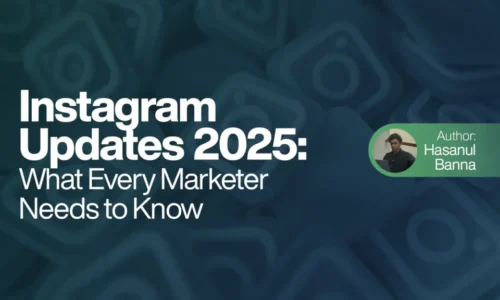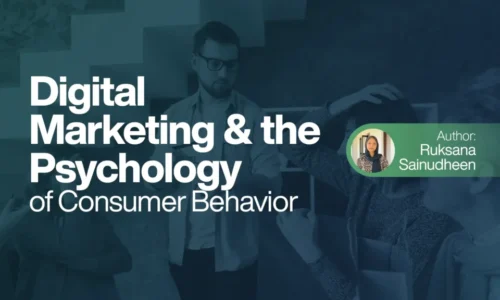User Generated Content (UGC): Perks and Possibilities
In the age of digital storytelling and social sharing, one form of content has risen to the top for brands trying to build trust and drive engagement, User Generated Content (UGC). From reviews of products to posts on Instagram, UGC is everywhere. And it’s not just a trend, it’s a powerful tool that businesses of all sizes are now actively tapping into.
So what exactly is UGC, and why is it becoming so essential in modern marketing? Let’s break it down.
Table of Content
What is User Generated Content (UGC)?
User-generated content refers to any content, text, images, videos, reviews, or testimonials created by people (not brands) about a brand’s product or service. This could be a happy customer posting a photo of their new shoes on Instagram, a YouTube unboxing video, or a product review left on an e-commerce site.
In contrast to traditional marketing content, which is created by a brand’s in-house team, UGC is created voluntarily by real users and customers. And that’s what gives it power and authenticity.
Why UGC Matters: The Perks
UGC isn’t just good to have; it can be a game-changer. Here’s why:
1. Builds Trust Through Authenticity
People trust people more than they trust paid ads. When someone sees real users sharing their genuine experiences, it feels honest. According to multiple studies, a large percentage of consumers say they trust UGC more than branded content.
That trust translates into action. A well-placed customer review or Instagram repost can convince a potential buyer far more than a polished ad campaign.
2. Drives Engagement
UGC invites people to interact. When brands feature customer photos, run hashtag campaigns, or respond to user posts, it creates a two-way relationship. This kind of engagement leads to deeper brand loyalty and a more active online community.
Plus, UGC is often more relatable and visually diverse, which can perform better on platforms like Instagram, TikTok, and Pinterest.
3. Cost-Effective Content Creation
Creating high-quality marketing content can be expensive. UGC helps reduce that cost. Instead of hiring models, photographers, and agencies, brands can tap into the creativity of their own audience.
Of course, permission and rights must be managed properly, but the financial and time savings can be significant.
4. Boosts SEO and Visibility
UGC often includes keywords and topics that potential customers are searching for. Product reviews, forum discussions, and Q&A posts can all contribute to better search engine rankings. More importantly, they help answer real user queries in a language that people understand.
5. Strengthens Brand-Customer Relationships
When brands showcase UGC on their website or social media, it shows that they value their customers. This not only encourages more content submissions but also builds emotional loyalty.
Customers whose content is featured by a brand are likely to keep supporting it and talking about it.
Types of UGC You Can Use
There’s no one-size-fits-all approach to UGC. Depending on your brand and audience, here are a few effective forms:
Customer Reviews and Ratings: These are crucial for e-commerce platforms. They guide buying decisions and build trust instantly.
Social Media Posts: Reposts from happy customers, especially with branded hashtags, can bring fresh and engaging visuals to your feed.
Video Testimonials: These are impactful, especially for services or high-value products. Seeing someone explain their positive experience can be highly persuasive.
Blog Comments and Forum Discussions: These show community involvement and help expand your brand’s online presence organically.
Creative Submissions: Art, fan-made content, product hacks, or tutorials created by users can become assets in your content strategy.
How to Encourage and Manage UGC
Getting great UGC doesn’t happen by accident. Here’s how you can encourage and use it effectively:
1. Run Campaigns and Contests
Invite users to share content around a theme or with a specific hashtag. Make it fun, easy, and rewarding.
2. Feature User Content on Your Platforms
Reposting photos or testimonials not only fills your feed but also inclines others to follow. Always ask for permission before sharing.
3. Make It Easy to Submit
Have clear instructions on your website or social profiles for how users can send in their content. Simplicity drives more submissions.
4. Monitor for Quality and Appropriateness
Not all UGC will be usable. Examine submissions and only showcase content that corresponds with your brand values.
5. Give Credit
Always tag or mention the original creator. It shows respect and encourages future participation.
The Possibilities Ahead
As we move into an even more connected and social-driven digital space, the role of users in shaping brand narratives is only going to grow. With the rise of micro-influencers, nano creators, and community-driven platforms, UGC is evolving from being just “extra content” to being a core part of digital strategy.
New tools and platforms are also making it easier for brands to notice and publish UGC, making it scalable and trackable.
Final Thoughts
User-generated content isn’t just a passing trend. It’s a reflection of how people connect with brands today through stories, conversations, and shared experiences. For businesses, embracing UGC means shifting from being the sole storyteller to becoming a platform where customers share the spotlight.
It’s more than content. It’s a community.
Author Info
Kurian Jose, a Freelance Digital Marketing Strategist in Kochi.
Learner of the CDA, Digital Marketing Course in Kerala.



